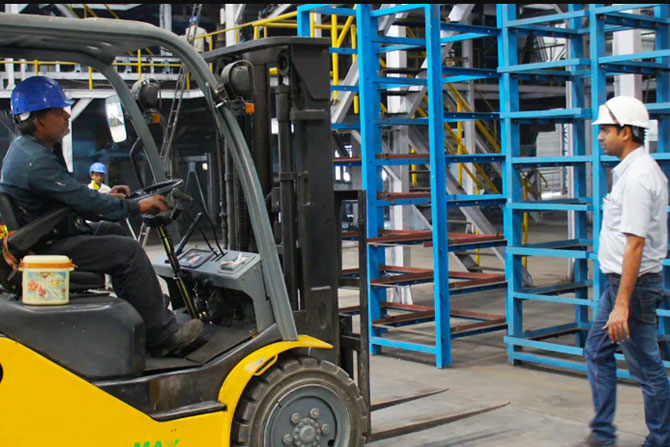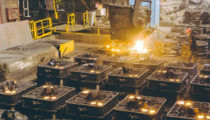Crescent Foundry, the pioneer in exporting and manufacturing casting products…

How to source Best Building Materials?
The construction industry has boomed over the yesteryears showcasing the country’s development in urban infrastructure to the world. India’s construction industry is known for integrating the locally available materials into magnificent architectures. From Indus valley civilization and Harappa culture country’s history has proved the world, how a novel is our construction design and building materials. As an individual everyone dream of a house of their own in their lifespan. Dreams always lead to achievements, but people find it arduous when it comes to constructing the house, as we wish for the best home to stay up for years to come. As a nation, the government is taking initiatives to improve its infrastructure by building dams, roads and renovating the old buildings. The construction industry uses more than hundreds of building materials for different aspects of building construction. The vital step in any construction project is sourcing the right building material. Building materials are classified into natural and human-made. Commonly used raw materials are wood, clay, stone, and human-made materials are concrete, steel, cement and masonry. But both these materials must be well treated before they are used for construction purpose.
Importance of building materials
Material plays a significant role in creating any building structures, which makes it valuable, precious, comfortable, durable and beautiful. In any building construction, two types of materials are required: structural or physical materials such as sand, cement, steel, bricks, wood, glass, plastic etc. The second one is functional or nonphysical material such as visual comfort with aesthetic appeal, occupancy, temperature control, noise control, surrounding environment, site condition, overall dimension, shape etc. In early days, people have been using woods, straw and pure bricks to build a house. But in this modern era, due to technology advancements civil or structural engineers have erudite to combine the right materials to come up with higher quality structures with aesthetic appeal to give a visual treat. Nowadays, eco-friendly materials usage sets the trend across the world, making way for greener construction projects. The building materials’ selection is always based on the customer’s budget plan and the materials’ efficacy in construction projects.
Choice of the materials
The selection of materials for a construction project is an essential step in the process. It requires considerations of initial and ongoing costs, durability, aesthetic appeal, life cycle assessment, and the proficiency to recycle, reuse, or dispose of the materials to the core end of its life. Sustainability of the materials means no compromise in present or future without harming the environment. Life cycle assessment considerations include the availability of materials, extraction, manufacturing, installation in construction projects, performance, recycling, and waste disposal without affecting the environment.
Commonly used materials in construction
Steel
Metal alloys steel and aluminium are used in the construction industry from numerous projects. Carbon is combined along with these metals to make it more fracture-resistant and more potent than iron. Many iron casting foundry manufacturing Stainless steels which are flexible, and resilience nature makes it highly durable for withstanding any climatic conditions. Its fire-resistant capability makes it less prone to burning when compared to wood or glass. Because it is high strength to size and strength to weight ratios, civil engineers use steel for the structural designs of extensive industrial facilities and tall modern buildings. It takes less installation time compared to concrete.
Cement
Cement is a commonly used binder material in all kinds of construction. It is known for its strong resilience nature in the overall integrity of the building construction. It is an easily manufactured and available product used across India for its strong character resisting high compressive load.
Bricks or Masonry
Bricks are small rectangular units made up of mud or clay offering high strength in constructing homes and offices across India. Bricks are of two types fired and unfired bricks. It is preferred for load-bearing walls due to its resistance properties in compression loads. Bricks have high thermal stability, high compressive strength with extreme durability, excess moisture absorption and resonance properties.
Concrete
Concrete are building materials used for foundation purpose in building houses, apartments, dams, reservoirs, bridges, highways, parking structures, and malls. It is a composite material made of a fair and coarse aggregate of crushed stone, gravel, and recycled concrete. Strength of the concrete depends on the mix with the cement and cures over time. It can be moulded into any required form or shape and hardens itself into a stone-like structure. Civil or structural engineers often use it for reinforcement with steel rods or bars to increase concrete tensile strength.
Planning things ahead
First and foremost step is to plan the process, go through design structures and understand the materials needed for the construction project. Once the list is prepared, it is essential to know when they will be required at what stage of the construction process. Next step is to determine the quantity needed and research for the quality suppliers who meet your demands.
Evaluate the quantity of the building materials
It is essential to estimate the quantity of the material required to avoid future problems. If we don’t calculate the needed amount of material initially, it may be hard to get if there is any shortage at the later stage. Deciding earlier, we will get to bargain with a supplier without impacting the budget.
Budget Plan
Budget is a crucial deciding factor in the construction project. Budget plan is required for the entire project and also separately for each requirement. If the budget is not planned correctly, it can misbalance the overall estimated expenses. While budgeting, often we tend to forget the overhead costs. Later these ignored expenses will shoot up the total budget. Hence while procuring building material; it is necessary to consider the charges of the cost of transportation, transit insurance, taxes, and include the cost of loading and unloading at a construction site.
Other factors to be considered
Choosing the right building material according to the need and budget will save time and effort. Once the correct quantity is estimated, finding the right supplier of material is the next step. Raw materials can be purchased directly from the manufacturers, wholesalers, distributors and retailers. Testing the quality of the material is essential when buying in bulk. Pre-testing will save time, money and harassment. There may be a need for spares at any time periodically or frequently, so it is better to check the availability and the cost before handed.
Architects consult and plan with civil engineers on the strength, weight, and durability of the project’s materials. Purchasing materials for construction involves various steps like researching the types of materials needed, analyzing the quality and specifications, selecting the right product from the best supplier who suits your needs both at aesthetics and cost. In the construction industry, there are national standards and testing methods to govern building materials’ structural integrity. We all know this process is overwhelmingly and time-consuming. Sometimes we may be tempted to leave all these decisions to the builder rather than personally. Either builder or individual here are some basic suggestions to consider while purchasing building materials.



